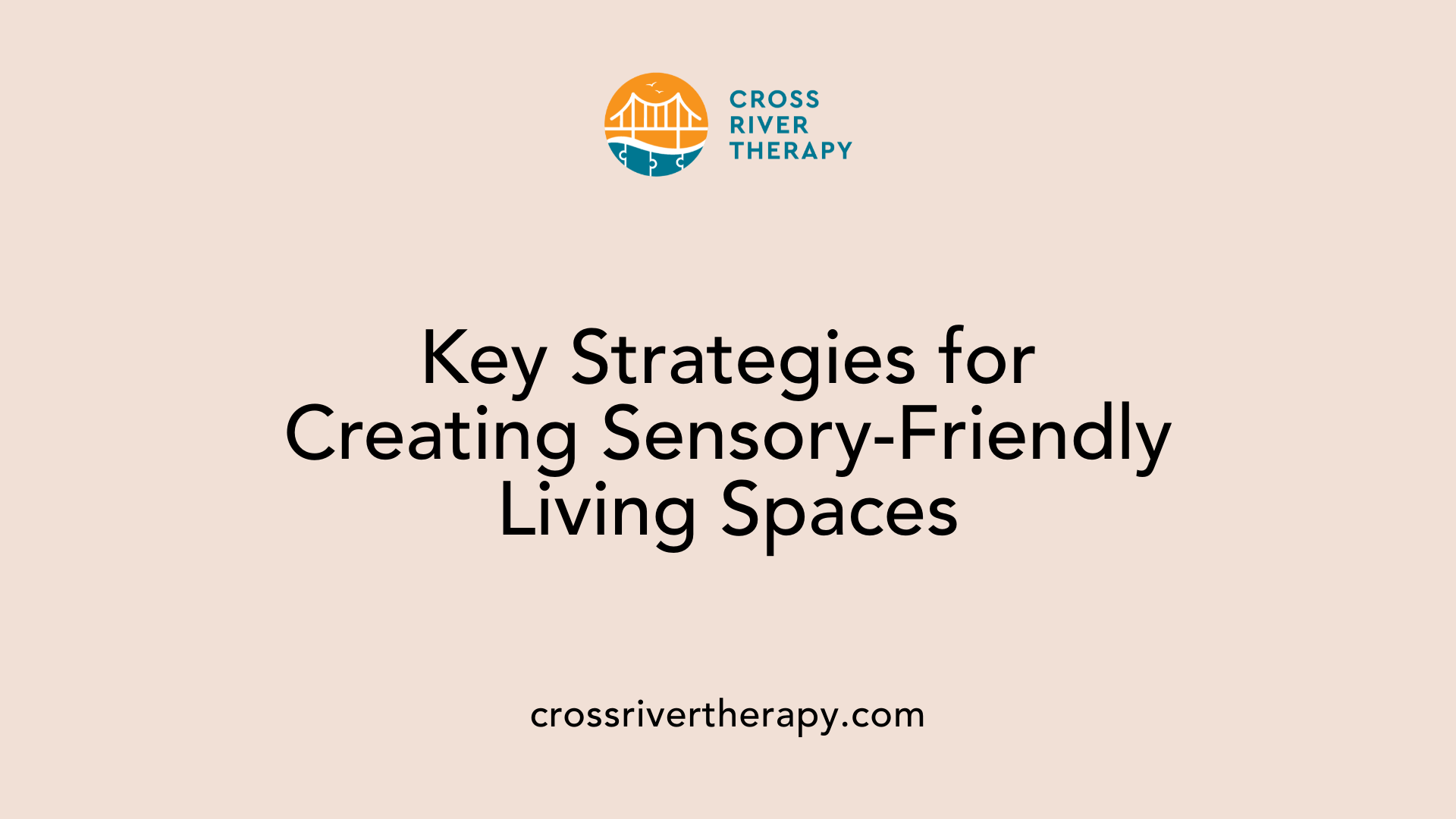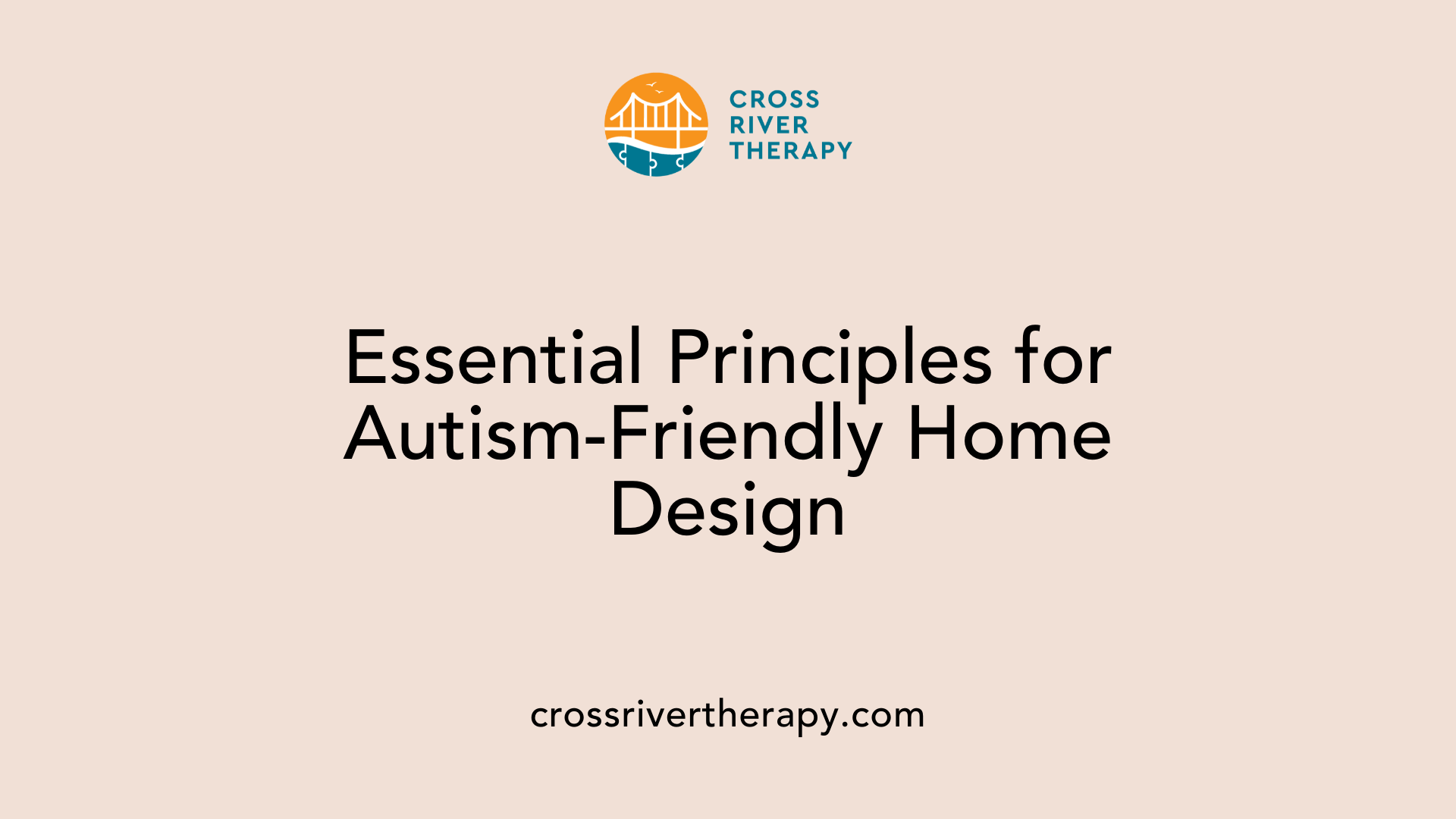Autism and sustainable home environments
Creating Eco-Friendly Homes that Support Autism
Understanding the Need for Autism-Friendly Sustainable Homes
Designing homes that cater to both environmental sustainability and the unique needs of individuals with autism is more than a trend; it's a necessity. These homes prioritize sensory comfort and emotional well-being while integrating eco-friendly features that promote long-term mental and physical health. This narrative explores how sustainable home environments can transform the lives of autistic individuals and their families, offering a harmonious blend of safety, comfort, and ecological responsibility.
Designing for Dual Needs: Eco-Friendly and Autism-Friendly Spaces
How can eco-friendly living spaces be designed to support individuals with autism?
Creating eco-friendly living spaces for individuals with autism involves a careful blend of sustainable practices and sensory-conscious designs.
Sustainable Materials
The selection of materials is crucial. Using non-toxic and low-VOC paints greatly improves indoor air quality, essential for those with heightened chemical sensitivities. Incorporating natural elements such as wood and stone adds aesthetic warmth while offering tactile comfort. These materials not only support healthy living environments but also contribute positively to emotional regulation for autistic individuals.
Sensory Comfort
Lighting plays a pivotal role in emotional well-being. Soft, adjustable lighting minimizes sensory overload, allowing residents to tailor their environment according to individual needs. Calming color palettes, like greens and blues, can create a serene atmosphere, reducing anxiety and promoting relaxation. Noise-reducing materials and soundproofing techniques further enhance comfort by mitigating auditory disturbances.
Biophilic Design
Integrating green spaces into home designs is another essential aspect. Access to gardens or park-like areas can significantly benefit emotional health and provide opportunities for social interaction. Biophilic elements, such as views of nature and the presence of indoor plants, not only enhance air quality but also promote a sense of well-being, thereby creating a healthier, more supportive environment for individuals on the autism spectrum.
Sensory-Friendly Features in Autism Homes

What are some strategies for incorporating sensory-friendly features in autism-friendly living spaces?
Creating autism-friendly living spaces can begin with the incorporation of adjustable lighting. This includes installing dimmer switches and providing multiple light sources which allow individuals to tailor the ambiance of their environment. Softer, warmer lights can promote relaxation, while brighter lighting can help with focus when needed.
Additionally, using neutral color palettes, particularly calming tones such as blues and greens, can minimize visual overload and create a soothing atmosphere. Beyond colors, incorporating natural textures is essential. Soft fabrics, organic materials like wood and stone, and tactile elements can significantly enhance comfort for individuals who may be sensitive to their surroundings.
Soundproofing is another critical strategy. Utilizing acoustic panels, heavy curtains, and other soundproof materials can effectively reduce noise disturbances, addressing auditory sensitivities that many individuals with autism experience.
Moreover, enhancing the presence of green spaces is beneficial. Access to gardens or parks not only provides sensory stimulation through nature but also supports emotional well-being, offering opportunities for physical activity and social interaction.
Lastly, integrating smart home technologies like automated lighting systems and temperature controls can enhance comfort, allowing for personalized adjustments that create a more supportive living environment.
Benefits of Sustainable Home Design for Autism

How do sustainable home designs benefit the well-being of autistic individuals?
Sustainable home designs provide a multitude of benefits for the well-being of autistic individuals. By prioritizing the creation of calming environments, these designs incorporate elements that support emotional regulation and reduce sensory overload. Key features such as adjustable lighting and soundproofing materials help create a soothing atmosphere.
Access to green spaces is particularly advantageous, as such environments can enhance emotional well-being and foster social interactions. Energy-efficient solutions not only curb energy costs but also alleviate financial stress for families, allowing them to devote resources towards other supportive measures.
Moreover, the integration of smart home technologies enables individuals with autism to control their living spaces more effectively. This customization accommodates sensory sensitivities and significantly enhances comfort. Ultimately, these thoughtful design elements contribute to an improved quality of life and emotional stability for those on the autism spectrum.
Principles of Effective Autism-Friendly Design

What environmental design principles are most effective for autism-friendly spaces?
Creating autism-friendly spaces involves a deep understanding of sensory needs and environmental factors. One of the most crucial principles is choosing the right materials. Non-toxic and low-VOC (Volatile Organic Compounds) building materials improve air quality while minimizing exposure to harmful chemicals, which is particularly important for individuals with heightened sensitivities.
Spatial layouts
Spatial layouts must promote ease of navigation and comfort. Open layouts with defined quiet zones can help reduce anxiety and create a predictable environment. Incorporating calming colors like soft blues and greens enhances emotional regulation, while soundproofing materials like acoustic panels minimize noise disturbances, catering to auditory sensitivities.
Personalization
Personalization is vital in autism-friendly design. Having adjustable lighting allows residents to tailor their sensory environment, addressing individual preferences and reducing overwhelm. Additionally, creating dedicated sensory rooms equipped with calming toys and natural textures fosters emotional well-being. Incorporating smart home technology empowers individuals to manage their environments effectively, enhancing their autonomy.
Involving individuals and caregivers in the design process ensures spaces cater to specific needs, greatly improving their quality of life.
Green Practices for Autism-Friendly Homes
How can families integrate green practices into their homes to support family members with autism?
Families can enhance the living environment for individuals with autism by prioritizing sensory-friendly designs that also embrace green practices. An effective way to achieve this is through the selection of eco-friendly materials. Choosing non-toxic substances, like low-VOC paints and sustainable building products, improves indoor air quality, essential for those with heightened sensitivities to pollutants.
To create calming spaces, incorporating natural light is paramount. Homes designed with large windows and open layouts can maximize sunlight exposure. Additionally, employing adjustable smart lighting systems allows individuals to tailor the brightness and color temperature to their preferences, fostering a soothing atmosphere.
The use of neutral colors throughout the home contributes to a serene environment, alleviating visual stress. Soft blues and greens, well-known for their calming effects, can also help enhance emotional stability for residents on the autism spectrum.
Integrating green spaces such as gardens or patio areas encourages interaction with nature, which is beneficial for emotional well-being. These outdoor areas serve as additional spaces for relaxation and sensory engagement.
Utilizing renewable energy solutions, including solar panels or energy-efficient appliances, not only reduces utility expenses but also leads to quieter home environments. Overall, these combined green practices can significantly improve the quality of life for individuals with autism and provide support for their families, promoting comfort and emotional regulation.
Integrating Smart Technology in Autism Homes

How can smart technology enhance autism-friendly home environments?
Smart technology plays a crucial role in creating environments that cater to the unique needs of individuals with autism. By integrating systems that promote autonomy and comfort, homes can be transformed into safe and calming spaces.
- Autonomy and comfort: Smart home devices like automated lighting systems allow residents to control the brightness levels in their homes. This feature is especially important for individuals with sensory sensitivities who may feel overwhelmed by harsh lighting. Additionally, smart thermostats enable adjustments to maintain comfortable temperatures, further enhancing overall well-being.
- Environmental control: Voice-activated assistants facilitate the management of daily routines, helping to make the home environment more predictable. For individuals who thrive on structure, this is invaluable as it reduces anxiety and allows for seamless transitions throughout the day.
- Adaptive technologies: Enhancing safety is another critical component. Smart systems can send alerts to caregivers when individuals wander or if other safety protocols are breached, providing an added layer of security and peace of mind for families.
In conclusion, smart technology not only enhances comfort and independence for individuals with autism but also substantially contributes to creating an emotionally supportive home environment.
The Role of Biophilic Design in Autism Homes

Why is biophilic design important in creating autism-friendly environments?
Biophilic design is crucial for crafting environments that cater specifically to individuals with autism by integrating natural elements that help reduce sensory overload. Features such as plants, water elements, and natural materials like wood and stone not only enhance the aesthetic appeal of living spaces but also instill a sense of calm.
Natural Elements
Incorporating nature into home designs can have profound effects. For instance,
- Indoor plants improve air quality and provide therapeutic benefits.
- Natural light exposure through large windows can uplift mood and create a serene atmosphere.
- Garden access allows individuals with autism to engage socially in a controlled, stimulating environment, which is essential for emotional well-being.
Stress Reduction
Engagement with natural settings helps to alleviate stress and anxiety, both of which are common challenges faced by individuals on the spectrum. Specific biophilic elements, such as quiet gardens or water features, can:
- Provide a peaceful retreat from sensory overload.
- Foster emotional regulation through soothing sensory experiences.
Emotional Connection
Moreover, biophilic design strengthens the emotional connection individuals with autism have to their surroundings. When residents can interact with the natural environment, it promotes positive mental health benefits. Creating spaces with:
- Organic shapes and soothing colors enhances familiarity.
- Calming views of the outdoors can lead to improved spatial awareness and relaxation.
By fostering a connection to nature through biophilic design, homes can significantly enrich the quality of life for individuals with autism while promoting emotional stability and well-being.
Financial and Environmental Benefits of Sustainable Practices
How do sustainable practices provide financial and environmental benefits for autism-friendly homes?
Sustainable practices not only enhance the living conditions for families with individuals on the autism spectrum but also yield significant financial and environmental benefits. Homes designed with energy-efficient systems, such as LED lighting and high-efficiency HVAC solutions, can lead to cost savings averaging around $750 annually. These savings can be redirected towards essential support and care for family members with autism, alleviating some financial strains.
In addition to cost reductions, sustainable homes contribute to healthier living environments. By using non-toxic building materials and ensuring proper ventilation, these homes drastically improve indoor air quality. This minimization of harmful pollutants is crucial for individuals with autism, who might have heightened sensitivities to environmental stimuli.
Overall, the integration of sustainable practices in home design fosters both economic relief and a supportive atmosphere, promoting emotional well-being and comfort for autistic individuals while positively impacting their surroundings.
Incorporating Safety and Security Measures in Autism Homes
What safety and security measures should be incorporated into autism-friendly homes?
Creating a nurturing environment for individuals with autism hinges on implementing robust safety and security measures. Key features include:
- Secure Entry Points: Install doors and windows that can be locked easily, ensuring children are safe from wandering off.
- Locks and Sensors: Use childproof locks and window sensors to alert caregivers when a door or window is opened. This helps prevent unintentional exits and supports supervision.
- Hazardous Items Storage: Keep potentially dangerous items, such as cleaning supplies or sharp objects, safely stored out of reach. Using cabinets with child-safe locks is advisable.
Calming Spaces for Emotional Well-being
Incorporating calming spaces into the home design can significantly enhance emotional regulation. These spaces can feature:
- Soft Textures: Include cushioned furniture, weighted blankets, and sensory-friendly materials to provide tactile comfort.
- Controlled Lighting: Utilize adjustable or dimmable lighting to create a serene atmosphere, accommodating the sensory sensitivities common in individuals with autism.
Custom Safety Features for Accessibility
Accessibility is another vital aspect of safety in autism-friendly homes. Consider these features:
- Clear Pathways: Ensure that pathways are uncluttered and easy to navigate, helping to reduce anxiety related to movement within the home.
- Secured Furniture: Anchor furniture to walls to prevent it from tipping over, particularly in spaces where active play is common.
- Guided Visual Cues: Use visual schedules or signs to help individuals with autism understand routines and navigate spaces comfortably.
By integrating these safety and security measures, autism-friendly homes not only prioritize well-being but also foster independence and peace of mind for families.
Community and Family Involvement in Sustainable Home Design
How does community involvement play a role in sustainable home design for autism?
Community involvement plays a vital role in the development of sustainable home designs specifically tailored for individuals with autism. Engaging families, caregivers, and specialists in the design process ensures that the unique sensory and emotional needs of autistic individuals are effectively met. This collaborative effort fosters inclusivity, allowing for a diverse range of perspectives and experiences to shape the living environment.
Inclusivity
By actively involving community members, the design process becomes more responsive to the realities faced by autistic individuals and their families. This grassroots approach promotes a shared understanding of challenges and leads to sustainable solutions that prioritize comfort and accessibility.
Support Networks
Furthermore, community involvement enhances support networks, creating opportunities for knowledge exchange and the sharing of resources. Families can connect with one another, share experiences, and build relationships that help alleviate feelings of isolation.
Collaborative Planning
Incorporating projects like shared gardens or community solar initiatives can also promote sustainable living education, which is essential not only for environmental conservation but also for building social connections among residents. This collective approach creates an enriching environment that not only addresses the needs of autistic individuals but also strengthens community ties, ultimately improving everyone’s quality of life.
Exploring the Intersection of Autism, Sustainability, and Design
What is the significance of the intersection of autism, sustainability, and environmental design principles?
The intersection of autism, sustainability, and environmental design principles is significant as it addresses both ecological responsibility and the specific sensory needs of individuals with autism. By merging sustainable practices with autism-friendly designs, we can create homes that prioritize comfort, safety, and emotional well-being.
Environmental Impacts
Sustainable home designs reduce harmful environmental impacts by utilizing non-toxic materials and enhancing energy efficiency. These practices help mitigate pollution that can heighten sensory sensitivities for individuals with autism. Access to green spaces further contributes to improved mental health, encouraging outdoor interaction and physical activity.
Adaptive Solutions
Integrating smart technologies enhances adaptability in home environments. Features like adjustable lighting and noise reduction systems allow for tailored sensory experiences, accommodating individual preferences. This customization fosters an atmosphere of independence and comfort, significantly benefiting those on the autism spectrum.
Emotional Resilience
The combination of eco-conscious living and supportive design promotes emotional resilience. Thoughtfully designed spaces can help mitigate stress and anxiety, providing calming environments crucial for emotional regulation. The result is a nurturing atmosphere that not only supports individuals with autism but also resonates with sustainable living principles for a healthier planet.
A Harmonious Blend of Nature and Nurture
Creating sustainable home environments that accommodate the unique sensory needs of individuals with autism is a crucial step towards fostering individual well-being and environmental stewardship. By combining thoughtful design principles with innovative technology and community engagement, these homes not only cater to the comfort and safety of their residents but also contribute to a broader societal shift towards inclusive and sustainable living. Embracing this comprehensive framework can lead to healthier, more supportive spaces that empower individuals with autism and their families to thrive.



